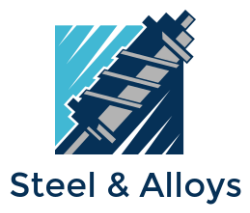When it comes to materials used in various industrial applications, steel is an essential and versatile choice. One steel grade that has gained prominence in the manufacturing world is 20MnCr5. This webpage delves into the key aspects of 20MnCr5 steel, from its composition and properties to applications and heat treatment processes.
Country, Standard, and Specification
20MnCr5 is a steel grade primarily associated with European standards. The country of origin is Germany, where it is widely produced and used. The standard that covers this steel grade is DIN EN 10084. It is specifically defined under the specification 1.7147 within this standard.
Chemical Composition
20MnCr5 is an alloy steel known for its excellent hardenability and toughness. Its chemical composition typically includes the following elements:
- Carbon (C): 0.17 - 0.22%
- Manganese (Mn): 1.10 - 1.40%
- Chromium (Cr): 1.00 - 1.30%
- Phosphorus (P): 0.035% max
- Sulfur (S): 0.035% max
Mechanical & Physical Properties
20MnCr5 exhibits a range of mechanical and physical properties that make it suitable for various applications:
- Tensile Strength: 600 - 850 MPa
- Yield Strength: 450 MPa (min)
- Elongation: 10% (min)
- Hardness: 60 HRC (max)
Physical Properties:
- Density: 7.85 g/cm³
- Melting Point: 1430°C (2606°F)
Equivalent Steel Grades
20MnCr5 has equivalent grades in various international standards:
- BS: 527M20
- AISI/SAE: 5120
- DIN: 20MnCr5, 1.7147
- Werkstoff No: 1.7149
- EN: 20MnCr5
- AFNOR: 20MC5
- JIS: SCr420H
- IS: 20MnCr5
- GOST: 18ChG
Applications and Uses
Due to its balanced combination of properties, 20MnCr5 finds application in several industries, such as automotive, aerospace, and machinery. It is commonly used for:
- Gears and gear components
- Shafts and crankshafts
- Bolts and fasteners
- Machine parts requiring high strength and wear resistance
Heat Treatment Process
The heat treatment of 20MnCr5 is crucial to achieve the desired mechanical properties. Typical heat treatment processes include:
- Normalizing: Heating to 850-880°C, followed by air cooling.
- Hardening: Heating to 820-850°C, followed by oil or water quenching.
- Tempering: Reheating to 150-200°C to achieve the desired hardness and toughness.
Proper heat treatment ensures the development of a fine-grained structure and excellent hardenability.
Size Ranges & Sections Available
20MnCr5 steel is available in various forms, including round bars, flat bars, and billets. Typical size ranges encompass diameters from 10mm to 150mm or more. These materials are often supplied in conditions such as annealed, as-rolled, or heat-treated to meet specific requirements. The choice of size and condition depends on the intended application.
In summary, 20MnCr5 steel, with its favorable composition, mechanical properties, and international equivalents, is a versatile material that serves a wide range of industrial needs, from manufacturing gears to crafting machine components. Understanding its properties and applications is essential for making informed choices in various engineering and manufacturing fields.
